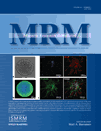
MAGNETIC RESONANCE IN MEDICINE
Scope & Guideline
Exploring the Future of Nuclear Medicine
Introduction
Aims and Scopes
- Advanced Imaging Techniques:
The journal covers the development and application of novel MRI techniques, including but not limited to diffusion-weighted imaging, MR spectroscopy, and chemical exchange saturation transfer imaging, aimed at improving diagnostic accuracy and treatment monitoring. - Quantitative MRI:
There is a strong emphasis on quantitative imaging methods that allow for precise measurements of tissue properties, including T1, T2, T2*, and fat fraction quantification, which are crucial for assessing various pathologies. - Machine Learning and AI Applications:
The integration of machine learning and artificial intelligence in MRI reconstruction, image analysis, and motion correction is a recurring theme, showcasing innovative approaches to enhance image quality and reduce scan times. - Clinical Applications:
Research articles frequently explore clinical applications of MRI in various medical fields, including cardiology, oncology, and neurology, focusing on how advanced imaging techniques can impact patient outcomes. - Safety and Technical Innovations:
The journal also addresses safety concerns related to MRI, including radiofrequency heating and the impact of implants, while presenting technical innovations aimed at optimizing MRI systems for safer and more effective use.
Trending and Emerging
- Deep Learning Applications:
The use of deep learning for image reconstruction, motion correction, and parameter estimation is rapidly increasing, showcasing the potential of AI to revolutionize MRI practices and improve diagnostic accuracy. - Real-Time Imaging Techniques:
There is a growing emphasis on real-time MRI techniques, particularly in cardiac imaging and functional MRI, which allow for dynamic assessment of physiological processes and enhance the utility of MRI in clinical settings. - Multimodal Imaging Approaches:
Research exploring the integration of MRI with other imaging modalities, such as PET and CT, is on the rise, promoting comprehensive assessments of patient conditions and improving treatment planning. - Enhanced Safety Protocols:
As safety concerns regarding MRI usage grow, there is an increasing focus on developing protocols and technologies to mitigate risks associated with RF heating and patient comfort during scans. - Physiological and Functional Imaging:
Emerging themes include advanced physiological imaging techniques that assess blood flow, oxygenation, and metabolic activity, highlighting the importance of functional information in clinical diagnostics.
Declining or Waning
- Traditional Contrast Agents:
The focus on conventional gadolinium-based contrast agents appears to be waning as the field moves towards non-contrast imaging techniques and the use of novel molecular imaging agents that enhance safety and efficacy. - Basic MRI Physics Studies:
There is a noticeable reduction in publications centered on foundational MRI physics principles, as the community increasingly prioritizes applied research that translates directly to clinical practice and patient care. - Single-Field Strength Studies:
Research centered solely on a single magnetic field strength (e.g., 1.5T) is becoming less common, with a growing trend towards multicenter studies that assess the performance of imaging protocols across various field strengths. - Static Imaging Techniques:
The exploration of static imaging techniques is declining in favor of dynamic imaging methods that provide real-time insights into physiological processes, thus enhancing diagnostic capabilities. - Conventional Image Reconstruction Methods:
There is a marked decrease in articles focusing on traditional image reconstruction algorithms, as the field rapidly adopts advanced computational methods and deep learning techniques.
Similar Journals
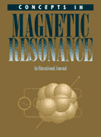
CONCEPTS IN MAGNETIC RESONANCE PART A
Fostering Global Collaboration in Magnetic ResonanceCONCEPTS IN MAGNETIC RESONANCE PART A, an esteemed journal published by Wiley-Hindawi, stands as a pivotal platform in the field of spectroscopy since its inception in 2002. With an Open Access model implemented in 2019, this journal allows for the broad dissemination of research findings, fostering collaboration and innovation among researchers, professionals, and students globally. While it currently holds a quartile ranking of Q4 in Spectroscopy, it aspires to provide a comprehensive collection of original research and review articles that address significant advancements and methodologies in magnetic resonance. Its unique focus invites contributions that enhance understanding and application of imaging techniques, thereby playing a vital role in bridging theoretical concepts to practical applications in chemistry. Boasting an ISSN of 1546-6086 and an E-ISSN of 1552-5023, it continues to encourage the exchange of ideas and data among the scientific community within the United States and beyond, based in the historic Adam House in London.
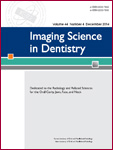
Imaging Science in Dentistry
Empowering clinicians with breakthrough imaging methodologies.Imaging Science in Dentistry is a premier open-access journal published by the Korean Academy of Oral & Maxillofacial Radiology, dedicated to the cutting-edge field of dental imaging and radiology. Since its inception in 2011, the journal has played a pivotal role in disseminating crucial research that advances our understanding of imaging techniques in dentistry, imaging-based diagnostics, and treatment planning. With an impressive Q2 ranking in various fields, including Dentistry (Miscellaneous), Radiological and Ultrasound Technology, and Radiology, Nuclear Medicine, and Imaging as of 2023, it is recognized for its contribution to the academic community, attracting a diverse readership that encompasses researchers, clinicians, and students. The journal provides a platform for sharing innovative methodologies, clinical studies, and reviews that shape current practices in dental imaging while promoting open access to enhance knowledge sharing globally. Through its rigorous peer-review process and commitment to high-quality publications, Imaging Science in Dentistry continues to set a standard for excellence in imaging sciences in the dental profession.
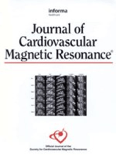
JOURNAL OF CARDIOVASCULAR MAGNETIC RESONANCE
Exploring the depths of cardiovascular health through state-of-the-art magnetic resonance technology.JOURNAL OF CARDIOVASCULAR MAGNETIC RESONANCE (ISSN: 1097-6647, E-ISSN: 1532-429X) is a premier open access journal published by Elsevier Science Inc in the United Kingdom, dedicated to advancing the field of cardiovascular imaging through magnetic resonance technology. Since its inception in 1999, the journal has established a robust reputation, evidenced by its ranking in the Q1 category across various fields including Cardiology and Cardiovascular Medicine, Family Practice, and Radiology, Nuclear Medicine and Imaging, as reported in its 2023 assessments. With a strong emphasis on high-quality research and innovations, this journal serves as a vital resource for researchers, clinicians, and students alike, providing vital insights that influence clinical practice and enhance patient care. Its rigorous peer-review process ensures that all contributing authors publish influential studies that are widely disseminated within the academic community. Researchers can access the journal freely since it has been an open access platform since 2008, promoting a wider reach and engagement within the cardiovascular imaging arena.
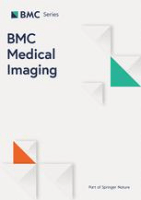
BMC MEDICAL IMAGING
Unveiling New Frontiers in Medical Imaging Research.BMC Medical Imaging is a premier open-access journal dedicated to advancing the field of radiology, nuclear medicine, and imaging technologies. Published by BMC in the United Kingdom, this journal serves as a vital resource for researchers, clinicians, and students, fostering a collaborative environment for sharing innovative findings and methodologies in medical imaging. With a commendable impact factor and an impressive Scopus ranking within the top 35% of its category, BMC Medical Imaging provides a platform for high-quality research to be disseminated widely and freely since its inception in 2001. The journal aims to cover a diverse array of topics, from advanced imaging techniques to their clinical applications, enhancing the understanding and effectiveness of diagnostic practices. By contributing to the body of knowledge and facilitating open access to research, BMC Medical Imaging plays a pivotal role in shaping the future of medical imaging and improving patient care.
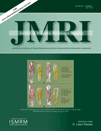
JOURNAL OF MAGNETIC RESONANCE IMAGING
Catalyzing Progress in Radiology and Nuclear Medicine.JOURNAL OF MAGNETIC RESONANCE IMAGING (ISSN: 1053-1807; E-ISSN: 1522-2586), published by WILEY, stands as a leading academic platform in the field of Radiology, Nuclear Medicine, and Imaging. With an impressive impact factor that reflects its Q1 ranking in the respective category and a notable Scopus rank of 30 out of 333 journals, this journal serves as a critical resource for cutting-edge research and innovative practices in magnetic resonance imaging. Since its inception in 1991, it has provided a repository of high-quality research, reviews, and clinical applications aimed at enhancing the understanding and technological advancements within the imaging community. Although it does not offer Open Access, the journal's comprehensive approach ensures that professionals, researchers, and students alike can gain crucial insights and contribute significantly to the evolving landscape of medical imaging. With a commitment to excellence and relevance, the journal continues to push the boundaries of knowledge and practice in its field.

MAGNETIC RESONANCE IMAGING
Transforming Clinical Practice Through MRI ResearchMAGNETIC RESONANCE IMAGING, published by Elsevier Science Inc, stands at the forefront of research in the fields of Biomedical Engineering, Biophysics, and Radiology, Nuclear Medicine and Imaging. Since its inception in 1982, the journal has become a vital resource, currently enjoying a Q2 ranking in its respective categories as of 2023, underscoring its influence and significance within the scientific community. With an ISSN of 0730-725X and an E-ISSN of 1873-5894, it provides an essential platform for disseminating groundbreaking studies and advancements in magnetic resonance imaging technology and applications. Researchers, professionals, and students benefit from its comprehensive articles that address both theoretical advancements and practical implementation in clinical settings. The journal's commitment to advancing knowledge is reflected in its recognition in Scopus Rankings, where it lies in the 67th percentile for Radiology, Nuclear Medicine and Imaging. By fostering an environment of critical dialogue and innovation, MAGNETIC RESONANCE IMAGING remains a cornerstone publication for those dedicated to pioneering the future of imaging science.
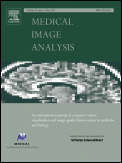
MEDICAL IMAGE ANALYSIS
Elevating Medical Practices with Cutting-Edge Image Analysis.MEDICAL IMAGE ANALYSIS, published by ELSEVIER, stands as a premier journal in the fields of computer science and medical imaging, particularly focusing on the intersection of Computer Graphics, Computer Vision, and Health Informatics. With an impressive impact factor and a consistent classification in the Q1 quartile across multiple domains including Radiology and Radiological Technology, this journal attracts high-quality research and innovative methodologies that significantly contribute to advancing medical practices and technology. Based in the Netherlands, and covering a gamut of topics from 1996 to 2025, it serves as a vital platform for disseminating cutting-edge studies aiming to enhance diagnostic accuracy and treatment planning through sophisticated imaging techniques. While it does not offer Open Access options, the journal’s rigorous peer-review process and high Scopus rankings—positioning it within the top percentiles across several categories—further solidify its reputation as an essential resource for researchers, professionals, and students committed to the evolution of medical imaging.
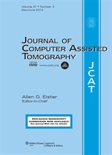
JOURNAL OF COMPUTER ASSISTED TOMOGRAPHY
Pioneering Research in Computer-Assisted ImagingJOURNAL OF COMPUTER ASSISTED TOMOGRAPHY, published by Lippincott Williams & Wilkins, stands as a vital resource in the field of Radiology, Nuclear Medicine, and Imaging. Since its inception in 1977, this journal has been dedicated to advancing the understanding and application of computer-assisted tomography, emphasizing innovative research and clinical practices that enhance diagnostic imaging techniques. With an impact factor reflective of its rigorous scholarship and relevance—ranking in the Q3 category—the journal serves as an essential platform for contributors and readers alike, navigating the challenges and opportunities within a rapidly evolving field. Researchers, professionals, and students are encouraged to engage with the rich repository of articles that cover emerging technologies, clinical applications, and theoretical advancements, collectively fostering a deeper comprehension of imaging sciences. Although not currently designated as an open-access journal, it continues to enhance discourse in the community from its headquarters in Philadelphia, PA, maintaining a commitment to the highest standards of academic excellence.

APPLIED MAGNETIC RESONANCE
Bridging Theory and Practice in Magnetic ResonanceApplied Magnetic Resonance, published by Springer Wien, stands as a pivotal academic journal within the realm of Atomic and Molecular Physics and Optics. Established in 1990, this journal has become a prominent platform for disseminating high-quality research papers that explore innovative applications of magnetic resonance technologies. With its ISSN 0937-9347 and E-ISSN 1613-7507, the journal is recognized for fostering a deeper understanding of the theoretical and practical aspects of magnetic resonance across various scientific fields. Despite its Q3 ranking in the 2023 Scopus category, it continues to attract a diverse readership interested in advancing the frontiers of physics. Researchers and professionals are encouraged to contribute their findings, as the journal not only enriches academic discussion but also influences real-world applications, making it an essential resource for burgeoning scientists and seasoned experts alike. Additionally, while the journal is not open access, its comprehensive articles can significantly enhance scholarly knowledge and inspire further research in this vital discipline.

MAGNETIC RESONANCE MATERIALS IN PHYSICS BIOLOGY AND MEDICINE
Transforming Knowledge in Physics, Biology, and MedicineMAGNETIC RESONANCE MATERIALS IN PHYSICS BIOLOGY AND MEDICINE, published by SPRINGER, is a premier academic journal dedicated to advancing the fields of biophysics, radiology, and medical imaging. With a strong presence in Germany and an international readership, this journal has established itself as a vital resource for researchers and professionals engaged in the interdisciplinary study of magnetic resonance applications. Featuring a commendable 2023 impact factor and categorized in Q2 quartiles across several domains—including Biophysics and Radiological Technologies—this journal provides a platform for innovative research and practical implementations in the field. Although it does not follow an Open Access model, it offers extensive archives dating back to 1984, affirming its long-standing commitment to scholarly excellence. The journal not only ranks impressively within Scopus metrics, but it also promotes ongoing discourse that bridges gaps between physics, biology, and medicine, making it an essential read for professionals and students aiming to stay informed about cutting-edge developments.